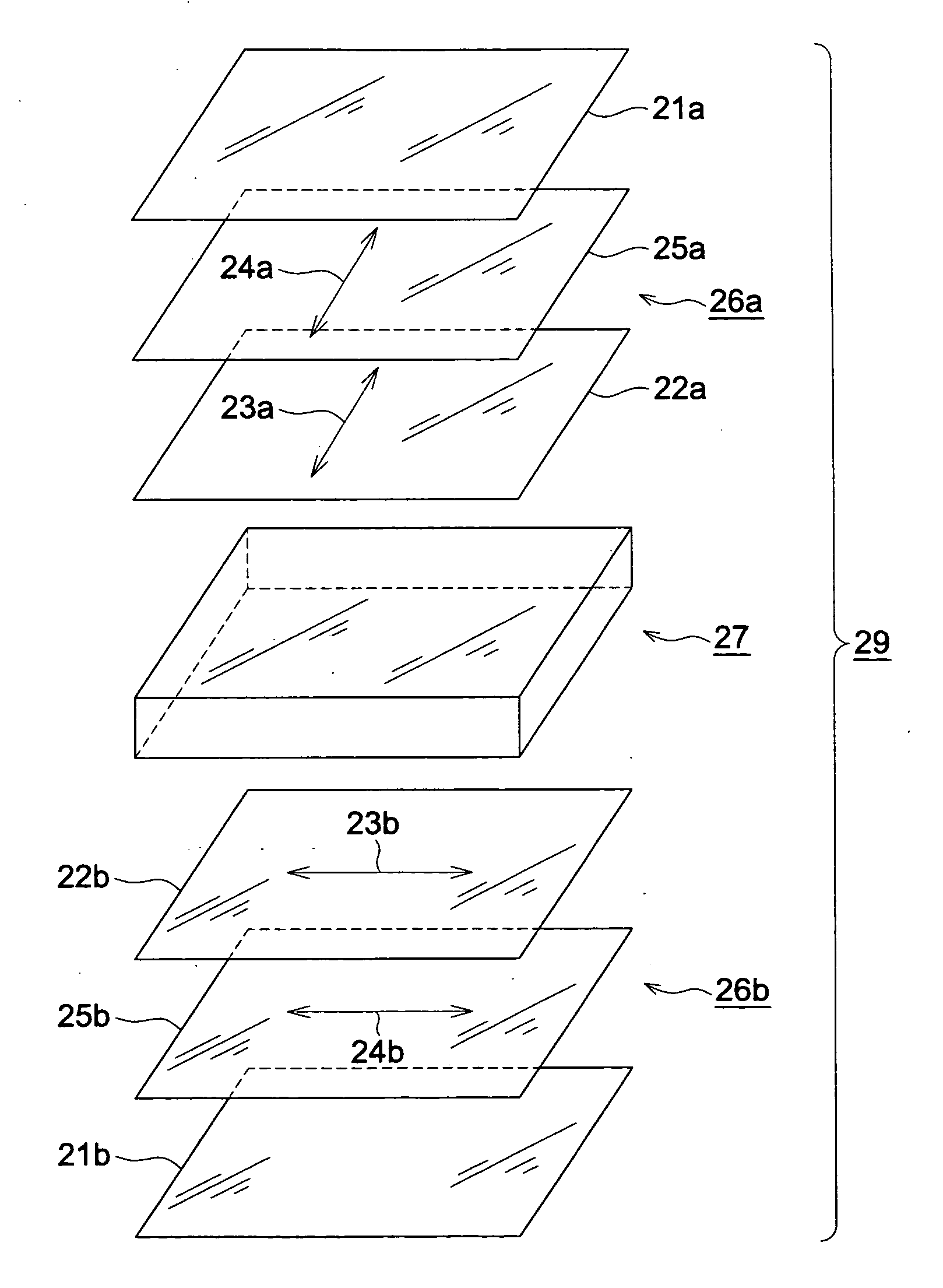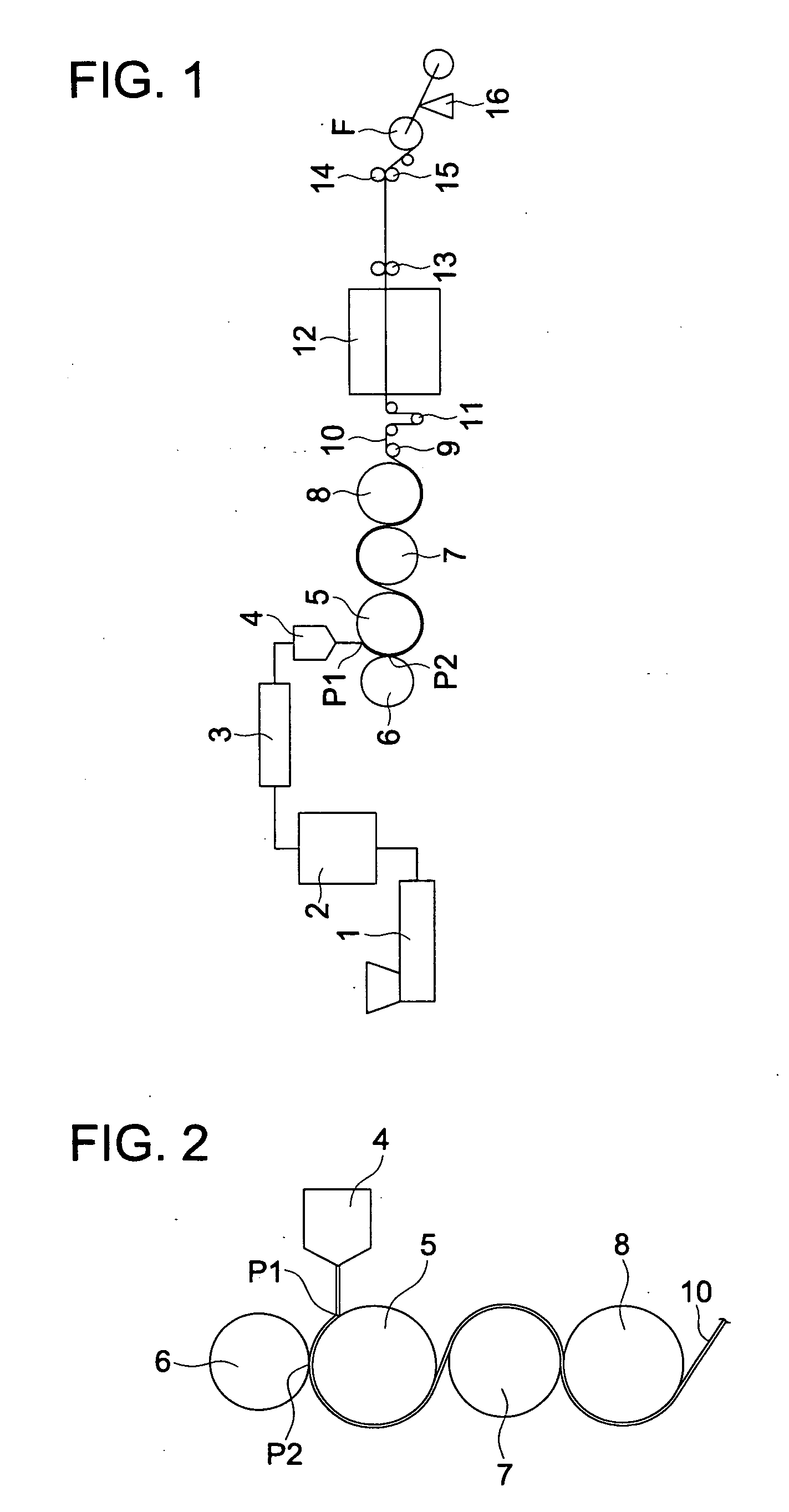Optical film, polarizing plate, liquid crystal display and ultraviolet absorbing polymer
a technology of ultraviolet absorbing polymer and optical film, which is applied in the direction of polarizing elements, lighting and heating apparatus, instruments, etc., can solve the problems of mechanical strength degradation, reducing the transparency of optical film, so as to achieve excellent optical properties, excellent dimensional stability, and small variation in retardation values
- Summary
- Abstract
- Description
- Claims
- Application Information
AI Technical Summary
Benefits of technology
Problems solved by technology
Method used
Image
Examples
example 1
[0451]The synthesis examples of ultraviolet absorbing polymers according to the present invention will be described below.
synthesis example 1
[0452]First, 2(2′-hydroxy-5′-methyl-phenyl)-5-methacryloylamino-2H-benzotriazole (exemplified compound UVM-2) was synthesized according to the method described below.
[0453]First, 30.7 g of 2-amino-p-cresol was dissolved in 250 ml of water, and 83 ml of concentrated hydrochloric acid was added. After adding, at 0° C., 17.2 g of sodium nitrite dissolved in 35 ml of water to this solution, the resulting solution was added into 500 ml of aqueous solution containing 36.1 g of m-phenylenediamine hydrochloride at 0° C. After dropwise adding, while keeping the resultant solution at 0° C., an aqueous solution formed by dissolving 170 g of sodium acetate in 250 ml of water, the solution was stirred at 5° C. for 2 hours, followed by further stirring for 2 hours at an ambient temperature. The pH of the solution was adjusted at 8 using aqua ammonia, and the precipitate was filtered, followed by washing well by water.
[0454]Into 300 ml of methanol, 48.4 g of the filtered precipitate was dissolved,...
synthesis example 2
[0459]First, 2(2′-hydroxy-5′-t-butyl-phenyl)-5-carboxylic acid-(2-methacryloyloxy)ethyl ester-2H-benzotriazole (exemplified compound UVM-14) was synthesized according to the method described below.
[0460]First, 20.0 g of 3-nitro-4-aminobenzoic acid was dissolved in 160 ml of water, and 43 ml of concentrated hydrochloric acid was added. After adding, at 0° C., 8.0 g of sodium nitrite dissolved in 20 ml of water to this solution, the resulting solution was stirred for 2 hours while keeping 0° C. Into this solution, a solution obtained by dissolving 17.3 g of 4-t-butylphenol in 50 ml of water and 100 ml of ethanol was added in drops at 0° C., while the alkalinity of the solution was kept by using potassium carbonate. The obtained solution was stirred at 0° C. for 1 hour, followed by further stirring for 1 hour at an ambient temperature. The solution was acidized using hydrochloric acid, and formed precipitate was filtered and washed well with water.
[0461]The filtered precipitate was dis...
PUM
| Property | Measurement | Unit |
|---|---|---|
| Percent by mass | aaaaa | aaaaa |
| Mass | aaaaa | aaaaa |
| Molecular weight | aaaaa | aaaaa |
Abstract
Description
Claims
Application Information
 Login to View More
Login to View More - R&D
- Intellectual Property
- Life Sciences
- Materials
- Tech Scout
- Unparalleled Data Quality
- Higher Quality Content
- 60% Fewer Hallucinations
Browse by: Latest US Patents, China's latest patents, Technical Efficacy Thesaurus, Application Domain, Technology Topic, Popular Technical Reports.
© 2025 PatSnap. All rights reserved.Legal|Privacy policy|Modern Slavery Act Transparency Statement|Sitemap|About US| Contact US: help@patsnap.com



